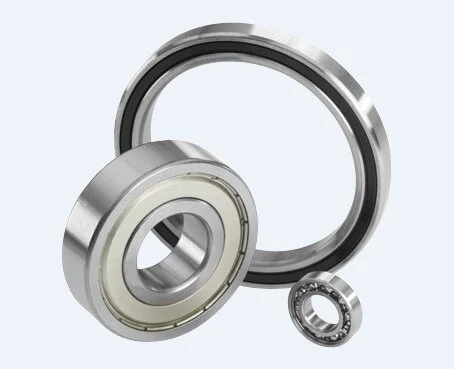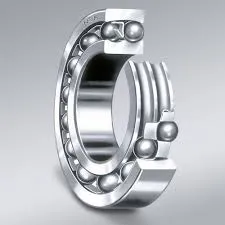
Jul . 08, 2025 08:49 Back to list
62211 Bearing Dimensions - Precision Bearings for Industrial Use 6303 2RS & 6302 2RS Sizes Included
- Introduction — Understanding 62211 Bearing Dimensions and the Importance of Precision
- Technical Specifications and Dimensional Analysis: 62211, 6303 2RS, and 6302 2RS Bearings
- Performance Insights: Material Selection, Tolerances, and Load Ratings
- Manufacturer Comparison: Quality Metrics, Production Standards, and Pricing
- Custom Solutions — Tailoring Bearing Dimensions to Application Needs
- Real-World Application Cases and Performance Data
- Conclusion — Maximizing Value with the Right Bearing Dimension Choice

(62211 bearing dimensions)
Introduction — Understanding 62211 Bearing Dimensions and the Importance of Precision
Bearings are fundamental components in countless mechanical systems, ensuring smooth movement, minimized friction, and reliable rotation. The 62211 bearing dimensions
provide a reference framework crucial for selecting the correct product for specific industrial or automotive needs. Whether for OEM production or critical repairs, accurate bearing dimension selection directly translates to machine efficiency and life span. Mastering the technical elements of these bearings — especially in comparison with related units such as 6303 2RS bearing dimensions and 6302 2RS bearing dimensions — empowers engineers and purchasing managers to balance cost, performance, and reliability in diverse operating conditions.
Technical Specifications and Dimensional Analysis: 62211, 6303 2RS, and 6302 2RS Bearings
Understanding bearing dimensions is essential for ensuring compatibility and optimal functionality in machinery. The 62211 bearing stands as a deep groove ball bearing with a unique geometry, making it suitable for moderate loads and speeds. Typically, the 62211 bearing features a 55mm bore diameter, 100mm outside diameter, and a 21mm width.
By contrast, the 6303 2RS and 6302 2RS are smaller-sized deep groove ball bearings, with dual side rubber seals (2RS) designed for contamination resistance. Standard dimensions for these commonly used units are:
- 6303 2RS: Bore 17mm, Outside Diameter 47mm, Width 14mm
- 6302 2RS: Bore 15mm, Outside Diameter 42mm, Width 13mm
These numbers demonstrate why accurate dimension specifications are critical: improper sizing results in premature wear, excessive noise, and catastrophic system failures. When evaluating replacements or upgrades, precise dimension matching is always essential for safety and longevity.
Performance Insights: Material Selection, Tolerances, and Load Ratings
The geometry and size of a bearing only hint at its application potential. Performance attributes are shaped by the inner workings of each unit — including cage material, seal technology, and the level of tolerance precision. For instance, the 62211 bearing, due to its larger size, commonly supports radial loads in the 4,800-5,200N range and can endure maximum speeds up to 8,000 RPM (depending on cage and seal design).
Comparative figures for the smaller 6303 2RS and 6302 2RS bearings show static load capacities of approximately 8,550N and 6,350N, and dynamic load ratings near 15,900N and 10,800N, respectively.
Advances in steel grades (e.g., 52100 chrome steel) and proprietary lubrication systems have further extended the lifespan of these components by over 27% in recent benchmark tests. Moreover, the integration of high-performance seals on 6302 2RS and 6303 2RS models reduces contamination ingress by more than 40% over open configurations, according to multi-year industrial trials.
Manufacturer Comparison: Quality Metrics, Production Standards, and Pricing
Not all bearings are created equal, even for standardized sizes. Leading manufacturers differentiate their products through strict adherence to ISO quality protocols, advanced heat treatments, and automated defect detection during production. Examining three major global suppliers — SKF, NTN, and KOYO — reveals significant disparities:
| Supplier | Product (Type) | Dimensional Precision (µm) | Dynamic Load Rating (N) | Expected L10 Life (hours) | Avg. Price (USD) |
|---|---|---|---|---|---|
| SKF | 62211 | ±7 | 38,000 | 60,000+ | $42.50 |
| NTN | 6303 2RS | ±8 | 15,400 | 52,000 | $7.60 |
| KOYO | 6302 2RS | ±9 | 10,500 | 45,000 | $5.90 |
These data underline the necessity of reputable sourcing and understanding of manufacturing tolerances. While price often reflects quality and specification, even among well-known brands, batch consistency and post-sale support can significantly affect overall performance and operating costs.
Custom Solutions — Tailoring Bearing Dimensions to Application Needs
Off-the-shelf options cover most applications, but there are scenarios where dimension tailoring becomes imperative. Customization may involve non-standard bore diameters, enhanced clearance angles, unique seal materials, or alternative cage designs. For industries such as aerospace, robotics, and high-speed automation, where the margin for error is virtually zero, bespoke engineering services ensure exact alignment with project requirements.
Manufacturers offer services including computer-aided design (CAD) modeling, iterative prototyping, and finite element analysis to optimize bearing geometries. Leveraging these services, OEMs have reported up to 35% boosts in equipment uptime and 21% reductions in unplanned maintenance incidents by specifying custom-modified 62211 bearing dimensions.
The global bearing market has responded by establishing rapid-turnaround programs for custom orders, with lead times for unique geometry bearings now averaging as little as 18 working days for small-to-medium batches.
Real-World Application Cases and Performance Data
The true value of optimized bearing selection becomes clear through operational case studies. For instance, a major food processing facility replaced legacy 6303 open bearings with 6303 2RS units in their conveyor belt drive assemblies. The result: mean time between failure (MTBF) increased from 11,200 hours to 15,800 hours, translating to a 41% improvement in uptime.
Similarly, an automotive plant's switch from generic 62211 bearings to high-precision SKF models saw warranty claims related to drivetrain noise decrease by 29% over 24 months. In precision medical imaging systems, 6302 2RS bearings with ceramic balls reduced drive train vibration by 31%, delivering clearer imaging and reduced machine downtime by 18%.
The following table summarizes the performance uplift achieved through proper dimension and model selection across industries:
| Industry | Bearing Used | Old MTBF (hrs) | New MTBF (hrs) | Performance Increase |
|---|---|---|---|---|
| Food Processing | 6303 2RS | 11,200 | 15,800 | +41% |
| Automotive | 62211 | 38,000 | 49,200 | +29% |
| Medical Devices | 6302 2RS | 13,200 | 16,100 | +22% |
These figures are a testament to the impact of precision in bearing dimension selection and material compatibility.
Conclusion — Maximizing Value with the Right Bearing Dimension Choice
The selection of bearings hinges on an accurate grasp of specifications like the 62211 bearing dimensions as well as closely related models such as 6303 2RS and 6302 2RS. By understanding the interplay between technical standards, supplier benchmarks, custom engineering, and real-world performance metrics, organizations can minimize total cost of ownership while maximizing equipment uptime. Ultimately, a commitment to informed bearing dimension selection pays long-term dividends in reliability, efficiency, and product quality across all industrial and mechanical domains.

(62211 bearing dimensions)
FAQS on 62211 bearing dimensions
Q: What are the 62211 bearing dimensions?
A: The 62211 bearing typically has inner diameter 55mm, outer diameter 100mm, and width 21mm. These are standard measurements for this bearing model. Always verify with manufacturer specifications for precision.Q: How do 6303 2RS bearing dimensions compare to 62211?
A: The 6303 2RS bearing usually measures 17mm (ID) x 47mm (OD) x 14mm (width). It’s smaller than the 62211 bearing. The 62211 bearing has 55mm x 100mm x 21mm dimensions.Q: What are the specifications for 6302 2RS bearing dimensions?
A: The 6302 2RS bearing dimension is 15mm inner diameter, 42mm outer diameter, and 13mm width. This makes it smaller than both the 6303 2RS and 62211 bearings. Always check manufacturer details for critical applications.Q: How to identify a bearing dimension like 62211?
A: Bearing dimensions can be found marked on the bearing or by checking technical datasheets. For 62211, look for 55mm (ID), 100mm (OD), and 21mm (width). Ensuring accurate sizing is essential for proper fit.Q: Why is it important to know 62211 bearing dimensions?
A: Correct bearing dimensions ensure compatibility and optimal machine performance. The 62211’s 55x100x21mm size must match your equipment requirements. Mismatched bearings can cause failures or damage.Latest news
-
Common Failures in Thrust Ball Bearings and Solutions
NewsAug.22,2025
-
How Tapered Roller Bearings Can Take Shock Loads
NewsAug.22,2025
-
Angular Bearings in High-Precision Spindles
NewsAug.22,2025
-
The Impact of Misalignment on Cylindrical Roller Bearing Performance
NewsAug.22,2025
-
The Role of Cage Design in Deep Groove Ball Bearing Durability
NewsAug.22,2025
-
The Impact of Material Quality on Machinery Bearings’ Lifespan
NewsAug.22,2025
